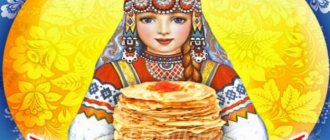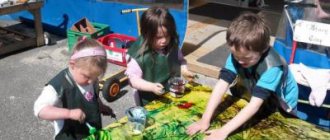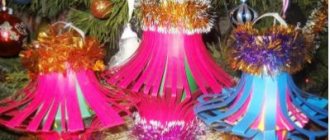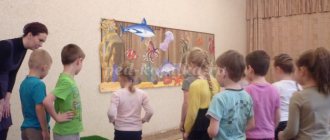Traditions of the Russian people for children
Our country is Russia. It is the largest in the world. The Russian people have many interesting traditions and customs:
- Our ancestors have long lived in wooden huts made of logs - hewn tree trunks.
- The boys' costume consisted of a long shirt, trousers and a cap. Instead of the usual shoes, they wore bast shoes woven from tree bast.
- Russian girls wore a sundress down to their toes over a shirt, and decorated their heads with a kokoshnik.
- Hospitality is one of the main traditions of the Russian people. Guests in Rus' were always welcome. The hosts greeted guests at the door and treated them to bread and salt.
- The holidays of our people are closely related to religion. On Easter, all homes bake Easter cakes, paint eggs and rejoice at the resurrection of Jesus Christ. “Christ is risen” - “truly risen” they say to each other. On Maslenitsa they eat pancakes all week, and on the last day they burn an effigy of winter. This is how Russians have celebrated the arrival of spring for hundreds of years.
- National dishes of Russia are pies with all kinds of fillings, cabbage soup, and porridge. Vegetables (turnips, cabbage, peas), as well as mushrooms and berries are especially held in high esteem. Drinks in Rus' have long been preferred: sbiten and kvass.
Presentation:
You might think that every nation has its own country: the Japanese have Japan, the Mexicans have Mexico, the Russians have Russia. In fact, this is not always the case. Several peoples can live in one country. If we talk about our country, then there are as many as 190 nationalities living in it: Tatars, Ukrainians, Bashkirs, Armenians, Kazakhs, Kyrgyz, Belarusians and many others.
Belarusian traditions for children
Belarusian, Tatar and Russian traditions are similar in many ways. It’s not for nothing that these peoples are called fraternal.
- Just like the Tatars, Belarusians celebrate the end of sowing. Only the holiday here is called Dozhinki. The best workers are chosen and gifts are given to them. There is also a special national holiday in Belarus. This is “Gukanne Viasny”. At the beginning of April, people call for spring. They make figures of storks from dough and paper and decorate houses and trees with them.
- A good reputation is very important for Belarusians. Therefore, they almost never swear, do not deceive, and, moreover, do not fight.
- The national Belarusian costume is made of white fabrics. For men, this is an embroidered shirt with a slit on the chest, a colored belt, and canvas pants. Along with a shirt, women wear a plaid skirt, an apron and always a bright sleeveless vest. The heads of Belarusian women are decorated with fabric headbands or wreaths.
- Many people associate Belarus with potatoes. Many national dishes are prepared from it - potato pancakes, potato babka, sorcerers. The latter look like meat pies. Only their shell is not made from dough, but from the same potatoes.
Tatar traditions for children
The Tatars live side by side with us. They are a people with a unique culture. This video will help tell you about the traditions of the people:
- Tatars are very kind to their family and homeland. They are proud of their origin and honor the traditions of their ancestors.
- They greet each other with both hands, saying the greeting: “Aassalaam aleikem! Aleikem assalam."
- In order to gather at one table, the Tatars do not need a big reason. They often visit each other. Definitely with hotels. The hosts also give small gifts.
- “The tea table is the soul of the family,” the Tatars say. Tea drinking is one of the most important traditions for them. Several generations gather around a large table and drink freshly brewed hot tea from small cups.
- The cuisine of the people is very diverse. A Tatar lunch can consist of 18 dishes with different flavors. Before and after meals, Tatars pray. The most famous national dishes of the Tatars are the sweetness of chak-chak and echpochmak (a triangular pie filled with fatty meat, onions, potatoes and eggs).
- The Tatar national costume is a long shirt decorated with embroidery, lace, and ribbons. For men it is knee-length, for women it is to the heels. Part of the costume includes boots made of soft leather with bright patterns. They are called chitek or ichigi.
- Tatars always wear a headdress or even several. A small cap - a skullcap - is put on the top of the head, and a hat or turban is placed on top of it. Older women wear a headdress that covers not only the head, but also the neck, as well as part of the back.
- The national holidays of the Tatars Nardugan, Navruz Bayram, Kurban Bayram, Sabantuy are associated with agriculture and religion. For example, Sabantuy is held after sowing. All girls and boys dress up in ceremonial national costumes and organize mass celebrations. They dance with all their hearts, sing loudly, compete, showing dexterity and strength. The most important competition is “koresh” belt wrestling. The winners receive gifts - a rooster in a cage, boots or something else.
Traditions of the peoples of the world for children
About 3 thousand different peoples and nationalities live on our planet. Each nation has its own special traditions. Some of them are very unusual for us Russians.
- When we say “yes,” we are used to nodding our heads. But the Bulgarians and Albanians do the opposite. To confirm what has been said, they wave their heads from side to side. A nod means "no."
- In Russia, the number 13 is considered unlucky, especially if it falls on a Friday. Such a day is jokingly called “the day of evil spirits.” In Spain, troubles await not on Friday, but on Tuesday the thirteenth. In some countries, six is considered an unkind number. In China it's a four. Some houses there don't even have a fourth floor. After the third comes the fifth.
- Men in Russia greet by shaking hands. And this is also an ancient custom. This is how our ancestors showed each other that they did not have weapons or stones in their hands. Handshakes are not accepted in Japan. They are replaced by bows. In India, as a sign of greeting, the palms are raised to the chin, as if for prayer, and, shaking the head, they say “namaste”. Eskimos rub noses when they meet. Because of the cold, only their faces are exposed.
Traditions and customs related to children
There are many traditions associated with the birth and raising of children:
- Turkmen girls aged 9-10 undergo the ceremony of braiding their hair. They undo two braids and make 20 small braids. From this day on they are considered adults. The outfit also changes.
- The Kazakhs have a custom of “cutting fetters.” When the baby takes his first steps, his legs are tied with a cord. A respectable man with many children is entrusted to cut it. The ceremony is accompanied by songs and wishes to stand firmly on your feet and walk confidently through life.
- Indians throw their newborn children from a 15-meter tower. They fall onto the tent stretched below. People believe that after this the children become lucky.
Eating
It is common for us to have breakfast and lunch while sitting at the table, and take food from a plate with a spoon and fork. But not everyone eats this way.
- The Chinese and some other eastern peoples use chopsticks instead of spoons and forks.
- Asians also eat while sitting on the floor or on low cushions.
- In India they eat with their hands. More precisely, with one hand - the right.
National dishes
Different nations have their own favorite food.
- Indian cuisine is distinguished by an abundance of different spices. Their dishes are very spicy. Indians prefer cereals, vegetables and fruits to meat.
- The Japanese eat mostly raw food. The basis of national Japanese cuisine is rice and sea creatures (shrimp, fish).
- The peoples of the Far North mainly eat meat. They hunt deer, seals, and walruses. Roots, berries and plant stems are also collected here.
- Italian cuisine is called one of the best in the world. Italians prepare delicious pasta - pasta and dumplings, which they call ravioli. This is also the birthplace of pizza.
Cloth
National clothing also belongs to the traditions of peoples.
- Women of the Middle East wear a strange attire for us - a dark and long burqa. Only the eyes remain open. It is not customary here for anyone to see even a part of a woman’s body.
- Indian women wear saris, long, colorful pieces of fabric intricately tied around the body. Putting on and wearing a sari is considered a real art.
- The Japanese national dress is kimono. It is very similar to a bright silk robe with a wide belt (obi). Kimono comes in women's, men's and children's sizes.
- Scottish men wear a kilt. This is a skirt. And part of the national costume of the Scots is a musical instrument - the bagpipe.
- Eskimos living in the Far North wear a kukhlyanka and high boots to keep warm from the severe cold. Special clothing is made from animal skins and fur.
- The national clothing of Greek men is also a skirt. It must be white, with 400 folds. On top is a snow-white shirt with puffy sleeves, a bright vest and a belt. Women dress up in a multi-layered suit with an apron, decorated with ringing coins.




